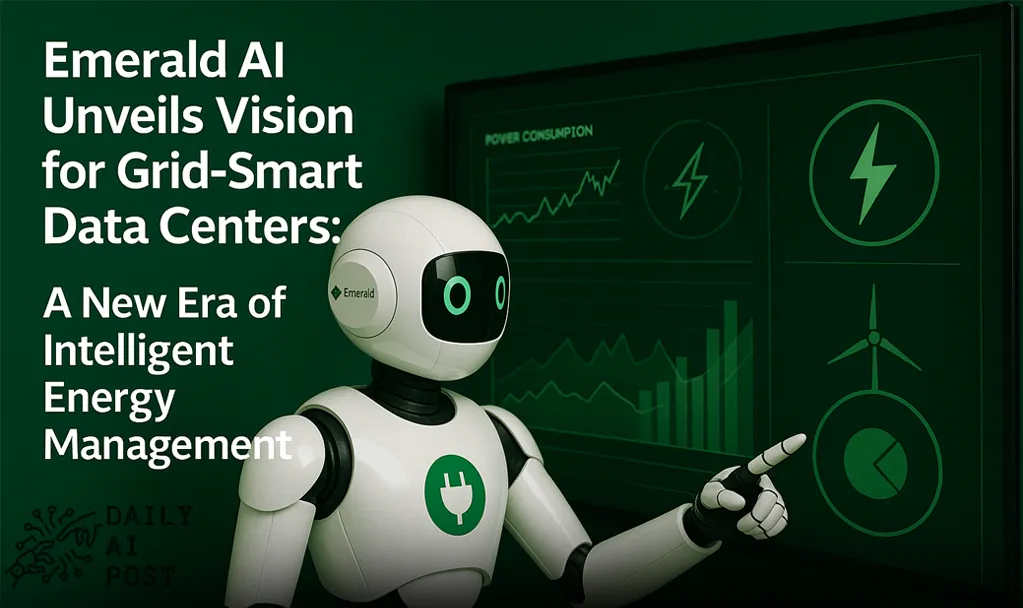
Emerald AI Unveils Vision for Grid-Smart Data Centers: A New Era of Intelligent Energy Management
In a bold move poised to redefine the architecture of energy consumption in the AI age, a new company backed by some of the most influential names in technology, finance, and climate strategy has stepped out of stealth mode. Emerald AI, a next-generation software firm, is positioning itself to transform energy-hungry data centers into dynamic, responsive assets that bolster — rather than burden — the electric grid.
The Shift: From Energy Liability to Virtual Power Plant
Against a backdrop of explosive AI compute demand and mounting constraints on grid capacity, Emerald AI’s mission is strikingly countercultural: rather than amplify stress on existing energy infrastructure, its solution uses advanced software to harmonize computational intensity with grid stability. The result is a vision in which data centers — long regarded as voracious power consumers — become agile instruments of grid optimization.
At the core of this innovation is software that dynamically adjusts AI workloads in real time to align with fluctuations in regional electricity demand. In doing so, it reduces the need for costly new generation projects and accelerates the grid integration of renewable energy sources.
Strategic Backing from Industry Luminaries
The startup has raised a $24.5 million seed round led by Radical Ventures, with additional participation from Nvidia, AMPLO, and a cadre of high-profile individual investors, including:
John Kerry, former U.S. climate envoy
John Doerr, Chair of Kleiner Perkins
Jeff Dean, Chief Scientist at Google
Fei-Fei Li, renowned AI researcher
The founder and CEO, Dr. Varun Sivaram, is a physicist and former senior advisor to Kerry, with prior executive experience at clean energy leader Ørsted.
Real-World Testing and Results
In collaboration with Oracle, Nvidia, the Electric Power Research Institute (EPRI), and Salt River Project, Emerald AI conducted a field test in Phoenix during a regional grid stress event. The results were compelling: the software successfully reduced data center power consumption by 25% over a three-hour peak window, while maintaining acceptable AI system performance.
This level of curtailment — or flexible workload shifting — offers a compelling alternative to the construction of new gas-fired power plants. It also offers a strategic tool for utilities seeking to stabilize increasingly volatile load profiles associated with the transition to renewable energy.
A Future Grid, Reimagined
“Imagine a future in which AI data centers are not merely passive consumers of electricity, but sophisticated collaborators in energy resilience,” said Sivaram in a recent interview. “We believe they can become a critical piece of the solution, enabling lower energy prices and faster deployment of renewable power sources.”
By enabling instantaneous redistribution of AI workloads—whether across geographies or across functions—Emerald’s system creates new headroom within existing infrastructure. In practice, this might mean offloading inference queries from an overheated region, or briefly pausing training runs for large academic models during peak load.
The implications are profound: hyperscalers—the likes of Amazon, Google, and Microsoft—could reduce their dependence on long, costly power interconnection delays that often span five to ten years.
Scientific Validation and Broader Impacts
Emerald AI’s chief scientist, Dr. Ayse Coskun, emphasizes that the approach aligns perfectly with the needs of a grid increasingly shaped by variable renewables. “You can’t reliably integrate solar and wind unless you have intelligent buffers,” she notes. “We believe data centers can be those shock absorbers.”
The company is now preparing for expanded testing in Phoenix, followed by additional demonstrations across the U.S., with commercial deployment targeted for early 2026.
A Quiet Revolution — or the Next Foundation of Digital Infrastructure?
The convergence of AI, energy management, and climate resilience has arrived, and Emerald AI stands at the fulcrum of that intersection. With institutional support, demonstrated outcomes, and a clear go-to-market pathway, it’s not just a technical achievement—it’s a paradigm shift.
And so, the question emerges:
If data centers can think like brains and now breathe like lungs—flexing with every pulse of the power grid—what else in our built environment might soon be reimagined as intelligent, symbiotic infrastructure?